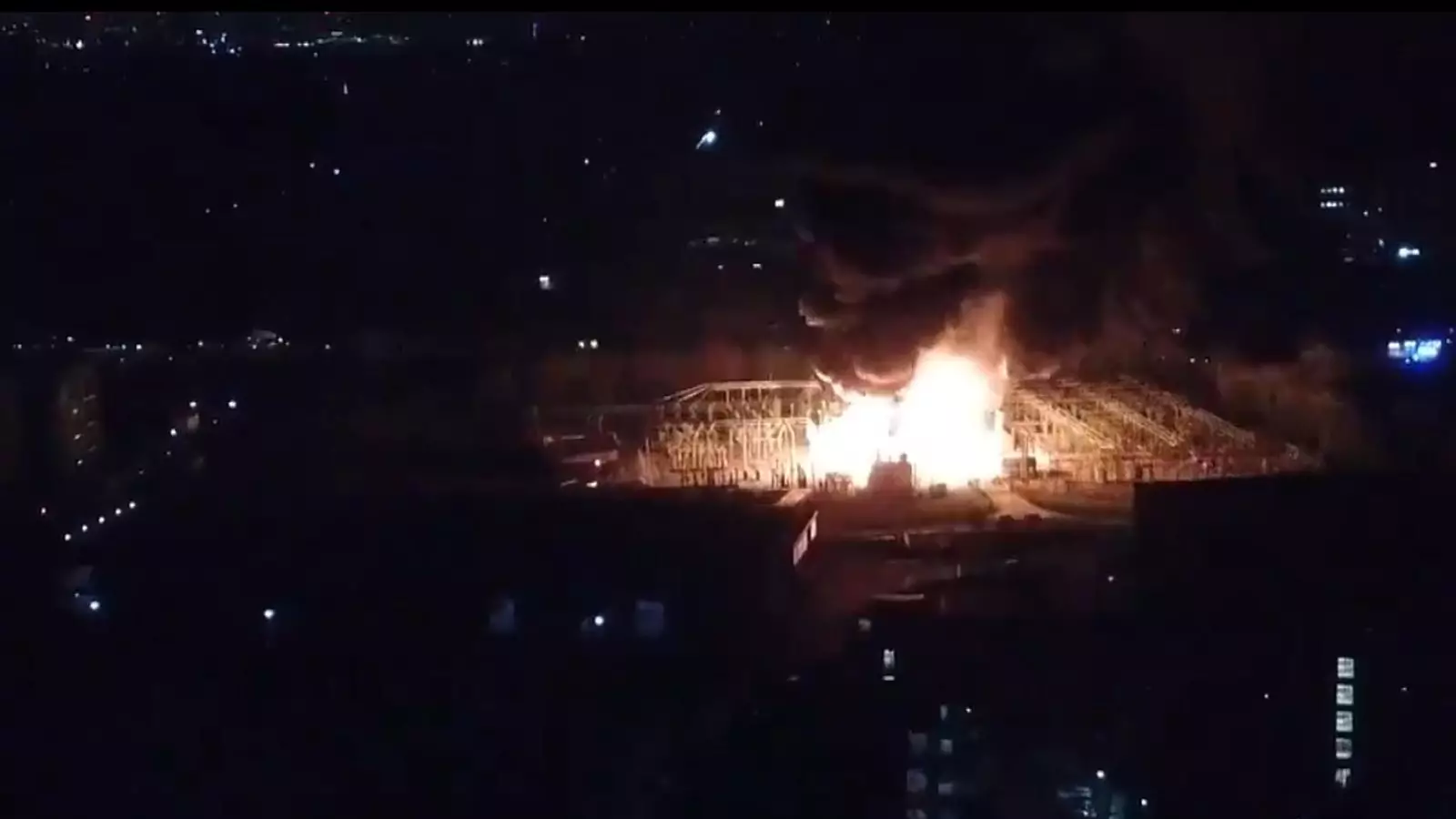In an alarming turn of events, Heathrow Airport—an iconic hub of global travel—is set to remain closed until midnight due to a catastrophic fire at a nearby electricity substation. Spokespeople from the airport have expressed that a “significant power outage” has crippled operations, and there’s no concrete indication of when power might be restored. It’s astonishing how a single fire can cause such widespread disruption, particularly in a facility that manages the travel of over 83 million passengers annually. This incident serves as a wake-up call, highlighting our vulnerabilities in infrastructure and the dire consequences of unforeseen disasters.
Passengers are advised to avoid the airport altogether, as authorities have issued warnings of substantial chaos in the coming days. The closure not only has immediate implications for those with scheduled flights, but it also raises questions about the overall resilience of our transportation systems. Can we really afford to have our air travel paralyzed by an event so seemingly mundane as a power failure? Such vulnerabilities unveil significant gaps in emergency preparedness and disaster management strategies at critical points of travel infrastructure.
Chaos in the Skies: The Ripple Effect of Flight Disruptions
According to data from flight tracking website Flightradar24, at least 1,351 flights will be affected today, including about 120 that are already airborne. The disruption ripples far beyond Heathrow itself, with numerous aircraft redirected to alternate airports like Gatwick and even international locations in Paris and Shannon, Ireland. It paints a grim picture of how quickly a crisis can escalate in our interconnected world. The closure has been announced as the peak travel hour approaches—5 a.m.—a time when the hustle and bustle of movement typically reverberates through the airport.
British Airways, the largest carrier operating from Heathrow, has understandably voiced its concern. Their statement resonates with frustration and urgency; the airline is scrambling to accommodate and inform its passengers while navigating the upheaval of schedules and operations. The disruption has monumental implications not just for the airline’s operational flow but also for the myriad of passengers whose travel plans have now been tossed into utter disarray. One cannot help but wonder if upgrades in infrastructure to enhance power reliability could have mitigated this situation.
Firefighters’ Herculean Efforts in the Face of Adversity
The inferno at the North Hyde substation, located just 1.5 miles from the airport, has resulted in a power outage affecting approximately 16,000 homes in the vicinity. The disturbing visuals of flames and thick black smoke must have been horrifying for those who witnessed it firsthand. Firefighters, numbering around 70, have responded valiantly, with ten fire engines deployed to combat the blaze. Even as they battle the flames, a 200-metre cordon has been set around the scene for public safety, resulting in a substantial evacuation effort. Pat Goulbourne, an Assistant Commissioner with the London Fire Brigade, described the situation as a “prolonged incident,” indicating that recovery efforts could take many hours—and possibly days.
What stands out here is the collaborative effort between multiple emergency services, including police support and local electricity networks working to restore power. Yet, even as these brave individuals are on the frontline, one questions if there should be more robust preventative measures in place to address potential hazards like power supply failures. The historical complacency regarding infrastructure maintenance and upgrades seems glaringly insufficient when real lives are at stake.
Time for a Wake-Up Call on Infrastructure Resilience
While this specific incident may be an anomaly, it shines a spotlight on the broader conversation surrounding infrastructure resilience and emergency response capabilities. In an era characterized by climate change, cyber threats, and global pandemics, we cannot afford to overlook the importance of building robust systems. It’s high time that authorities have serious discussions about ensuring our airports—and, by extension, our lives—are safeguarded against such unforeseen adversities.
Closing a major international airport for even a day is no small feat, and as the hours tick by, we are reminded of just how interconnected and fragile our world can be. As passengers contemplate their unfamiliar circumstances, it becomes clear that this is not just a matter of inconvenience; it raises critical questions about our safety and the investments we make in our collective future in transportation. This crisis urges a realignment of priorities as we confront the realities of an increasingly unpredictable world.


Leave a Reply